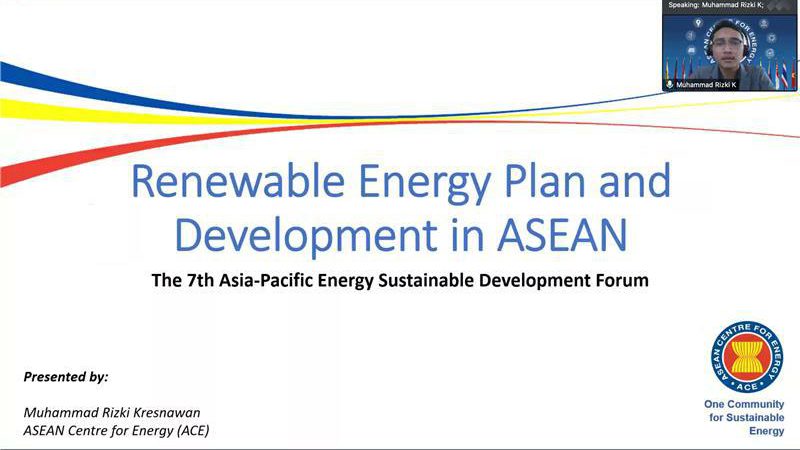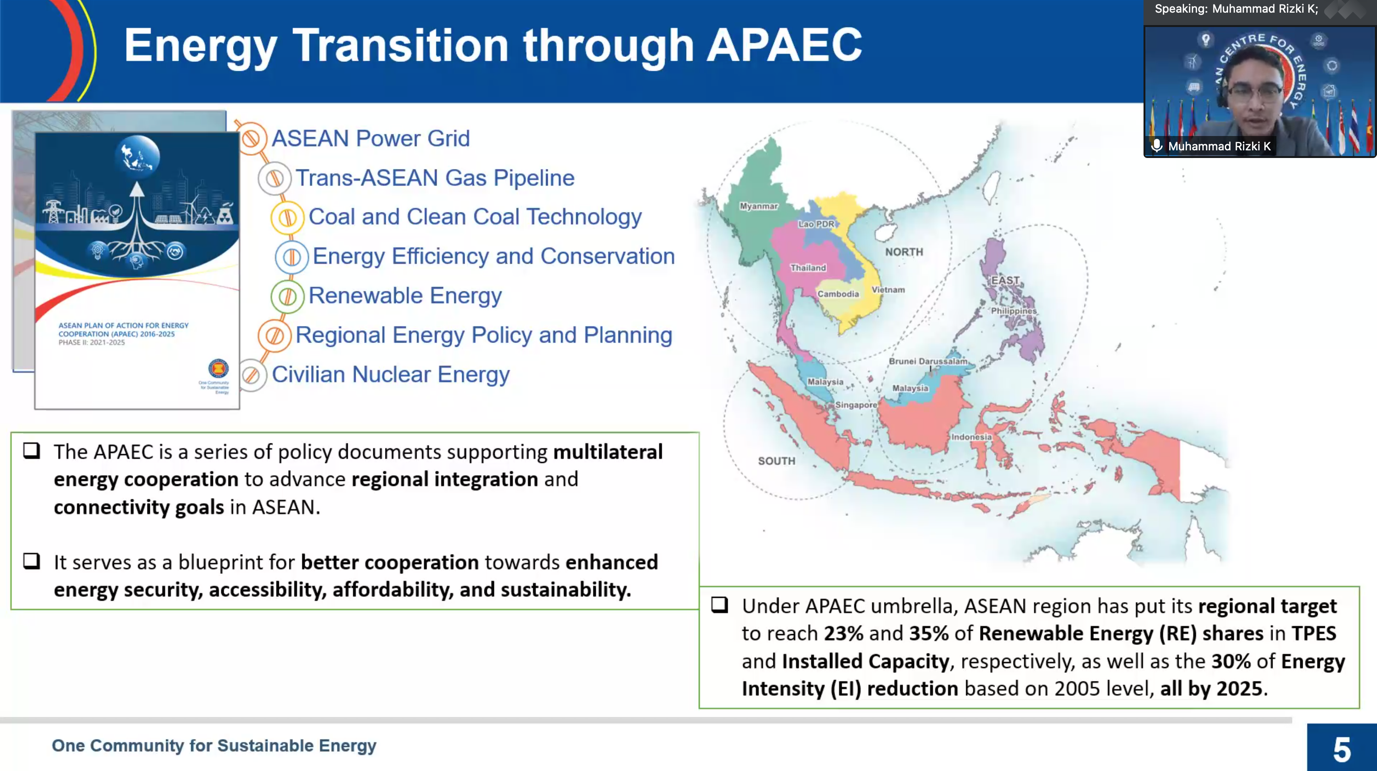Online, 17 Sept 2021
On September 17, 2021, the 7th Asia-Pacific Energy Sustainable Development Forum organized by APEC Sustainable Energy Center (APSEC) was held virtually with the theme Energy Transition on Low Carbon Green Development. There were two sessions in this forum: Session 1 with Supporting and Accelerating Energy Transition Through Innovation and Technology; and Session 2 with Regional Experience and Practices of Low Carbon Development.

Mr. Muhammad Rizki Kresnawan, the Energy Modelling and Policy Planning Officer of ASEAN Centre for Energy (ACE), gave his presentation during session 2 with “Renewable Energy Plan and Development in Southeast Asia” as the topic and in line with the 6th ASEAN Energy Outlook (AEO6).
At first, Mr. Rizki shared the Outlook of ASEAN Energy Landscape findings, where the primary energy demand in 2040 is expected to be 2.1 times higher than the 2017 level. ASEAN Member Countries (AMS) acknowledge the need for transitioning into a low-carbon economy. However, fossil-based generation is still expected to dominate the energy mix in the region to secure its energy supply. There will be an implication if ASEAN still relies heavily on fossil fuel because the reliance on the import of fossil fuel will be higher. The region could face serious energy security challenges due to the volatility of fossil fuel markets.

Under the ASEAN Plan of Action for Energy Cooperation (APAEC), ASEAN has the regional target to achieve 23% and 35% of RE shares in TPES and Installed Capacity by 2025. Under this document, multilateral cooperation aims to regional integration and connectivity in ASEAN towards enhanced energy security, accessibility, affordability, and sustainability. [/caption]
Following the target stated on the blueprint, the potential energy saving for ASEAN primary energy supply shows there could be about 12% saving in 2025 and 28% in 2040 if ASEAN could achieve the target under the APAEC. The analysis also shows savings relative to the Baseline Scenario in the use of oil, followed by coal and natural gas.
Achieving the RE target has been monitored, and the latest data shows that the current RE share in TPES is 14% while the target is 23%, so there is still a gap in the RE target in TPES. More efforts are needed for the region to achieve the target by revising the power development plan at the country level.
Achieving the target needs investment. The total investment required for capacity expansion in 2018-2040 is USD 548 billion in the Baseline Scenario, USD 486 billion in the ATS, and USD 508 billion in the APS. In the APS, 303.000 solar and wind jobs would be created by 2040, and it might generate economic benefits for ASEAN in terms of the transition. Mr. Rizki also shared several insights for five key areas that still need to be improved: 1) ASEAN power grid, 2) fossil fuels, 3) efficient air conditioning, 4) greener transport, and lastly, 5) clean cooking.
The presentation ended with the way forward:
(TNW).